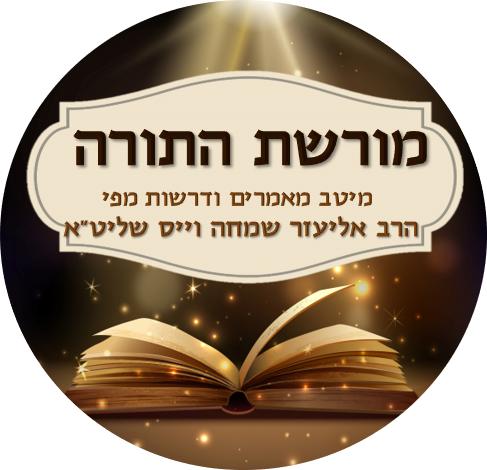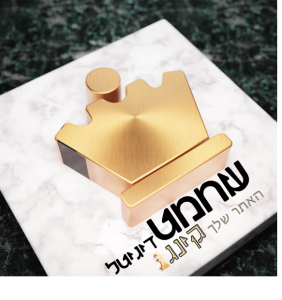Vayakhel Parshat Hachodesh and 4 cups of wine
The Talmud Yerushalmi (Megillah 25b) makes an enigmatic statement: “The reading of Parshat Para (3rd of the 4 Parshiot) and HaChodesh (last of the 4) must take place on two consecutive weeks. The reason for this is that there is a parallel to the law that one is not allowed to interrupt (by drinking other wine) between the third and fourth cup at the Pesach Seder“.
What does this mean and how are the two related? What is the connection between the Four Parshiot (Parashiot Shekalim [contributions to the tent of Meeting], Zachor [Remember Amalek], Para [Red Heifer] and Hachodesh [Establishing a new month]) and the Four Cups of wine drank at the Seder? Within the Torah literature, the four special Torah portions read at this time of year are referred to as one unit, “the Arba Parshiot”. Each of these parshiot is read because of its own, independent importance and particular message relevant to the time of being read they are not joined in a united theme. Yet it would seem that there is a philosophical bond between these four Torah readings that does not seem only coincidental. What is this relationship between each of “the Arba Parshiot” and what is the special connection between the 3rd and the 4th Parsha?
What is the overriding theme that connects Parashot Shekalim, Zachor, Para,and Hachodesh ? These parshiot are meant to enable us to prepare for the upcoming experience of freedom and renewal on Pesach. An essential aspect of Pesach is that each of us must feel as if we were slaves in Egypt and then experience, through the Seder, the moment of liberation.
Are we slaves who have to be redeemed from slavery? Although we are not slaves to people as in the days of old, we are sometimes slaves to our ambitions and aspirations. We wish to excel in some sphere of activity. Some of us are slaves to the pursuit of wealth, others to power and yet others to the pursuit of knowledge.
Yirmiyahu (Jeremiah) states that a person should not boast about his wisdom, wealth, or strength. Rather, he should work to know Hashem. This is the secret of the four Parshiot. They guide us to properly use wisdom, wealth, and strength. A slave is not free to utilize these gifts as long as he is subjugated by his master. Therefore, as Pesach nears, and with it the experience of freedom and renewal, we remind ourselves once again how to channel our strengths in the right direction. Shekalim refers to wealth and is about a communal mitzva that hints that we should use our possessions for Torah and mitzvot. In 19th century England there lived a famous Jewish philanthropist Sir Moses Montefiore. Queen Victoria once asked him, “Sir Moses, what is the extent of your wealth? How much do you own?” Sir Moses told her it would take a few days to do some accounting, and afterwards, he would reply. When Sir Moses told her his wealth she became upset saying, “This is offensive. Everyone knows that you have far greater wealth.” Sir Moses explained that he considered as his true wealth whatever money he gave to Tzedakah (Charity). Anything else that he possessed was only temporary and could be confiscated or lost.
Many people with wealth are controlled by it and feel that they can control others through it. Parshat Shekalim is about teaching us the proper use of our possessions.
Parshat Zachor is about strength. Amalek used his strength inappropriately. We are enjoined to utilize strength productively, by wiping out evil. Those of us who are valiant feel that we can use our power against others. We are slaves to our own might.
Parshat Para corresponds to wisdom. Para Adumah is the classic statute (chok) that defies rational thinking. The same mitzva that purifies also causes impurity. Para Adumah teaches us the right way to use wisdom. Unfettered wisdom is dangerous. Torah wisdom is governed and limited by Hashem’s command.
Parshat Hachodesh symbolizes Matan Torah. It describes Kiddush Hachodesh, the first mitzva given to us as a nation. As Pesach approaches, we prepare to experience true freedom and renewal by releasing ourselves from the shackles of self slavery and use our gifts and talents for spiritual matters and worshipping the Almighty.
The Four Parshiot are thus a preparation towards Pesah and represent stages in the spiritual redemption from the bonds of self slavery.
1- Shekalim is learning the correct use of wealth
2- Zachor is about learning the correct use of power
3 – Parah is about learning the correct use of knowledge
4- HaChodesh is the statement of the subduing of all our gifts to the will of Hashem.
The Maharal clairifies the advent of the four expressions found which connote the Jew’s redemption from Egypt (I took you out, I redeemed you, I saved you, I brought you ).
These expressions of salvation refer to the fact that Hashem saved the Bnei Yisrael from three types of oppression with which He had told Abraham the Bnei Yisael would experience being a) sojourners, b) slaves and those c) tortured. These are the first three expressions of redemption. To what does the last expression of salvation refer? The answer is that the Israelits were not” freed from” servitude but were” freed in order ” to be My Nation!”. Freedom from oppression was automatically to lead to the relationship which they will have with Hashem.
The connection between the Four Parshiot and the Four Cups now emerges. The Four Cups at the Seder represent the freedom from the three subjugators, and the fourth cup must then come next without interruption, as it hints to the purpose of freedom –the ultimate connection to Hashem. So too, in the realm of spiritual freedom, the first three Parshiot represent freedom from earthly realms and the fourth must come uninterrupted, connoting the bond to Hashem that results from Man’s efforts to cleanse himself.

 שחמט דיגיטל
שחמט דיגיטל